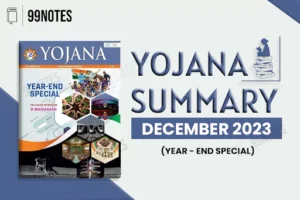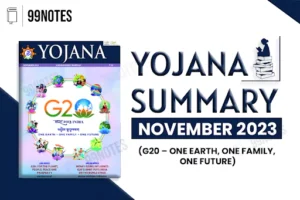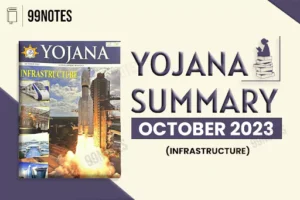14 February 2024 : The Hindu Editorial Notes PDF
The Hindu Editorial
14-February-2024
1. Old-fashioned trust and credibility bind India-UAE ties.
| Topic: GS2 – International Relations – Bilateral Relations Critical for UPSC: Examines India-UAE diplomatic ties, economic collaborations, and strategic importance, offering insights into global relations and regional dynamics. |
| Context |
| ● The article highlights the significant personal relationship between PM Modi and UAE President Sheikh Mohamed bin Zayed, emphasizing diplomatic ties, economic collaborations, and regional concerns during Modi’s UAE visit |
Deep Personal Relationship:
- Personal rapport between PM Narendra Modi and UAE President Sheikh Mohamed bin Zayed characterized by trust and credibility.
- Deviation from transactional diplomacy, emphasizing strategic interests and regular interactions.
Key Visits and Interactions:
- Ongoing third visit by PM Modi within eight months, showcasing the dynamic India-UAE relationship.
- Various interactions, including bilateral visits, COP28, G-20 Summit, and Vibrant Gujarat Global Summit.
Temple Inauguration and Cultural Ties:
- Unique timing of the visit aligned with the religious calendar for the inauguration of a grand Hindu temple in Abu Dhabi.
- PM Modi’s requested in 2015 for land, fulfilling the religious and spiritual needs of the UAE’s large Hindu community.
- Excitement within the 3.5 million Indian community in the UAE and the mega event “Ahlan Modi.”
Strategic Diplomacy and Global Presence:
- Prime Minister’s role as guest of honor at the 11th World Government Summit in Dubai, focusing on ‘Shaping Future Governments.’
- Platform for India to present views before an influential global audience.
- Strengthening India’s economic ties and global presence.
Economic Initiatives and Agreements:
- Launch of Bharat Mart to boost exports of Indian MSMEs, providing facilities in Dubai’s Jebel Ali Free Zone Area.
- India-UAE Comprehensive Economic Partnership Agreement (CEPA) reinforces the UAE’s position as India’s third-largest trading partner.
- CEPA and Bharat Mart combination potential to boost India’s manufactured goods exports and reduce transaction costs.
Other Major Achievements:
- Initiation of the master’s program in energy transition and sustainability by the Indian Institute of Technology Delhi in Abu Dhabi.
- UAE’s rising investments as the fourth highest source of foreign direct investment into India in 2022-23.
- Indian Oil Corporation’s 14-year deal to buy liquefied natural gas from the Abu Dhabi National Oil Company for India’s energy security.
- Progress in discussions on sensitive areas of defense cooperation.
Regional Security Concerns:
- Talks addressing the deteriorating regional situation, including the war in Gaza and Houthi attacks on shipping in the Red Sea.
- Potential risks to India’s economic growth, emphasizing the need for coordination with regional players like the UAE, Saudi Arabia, and Egypt.
Conclusion:
- In conclusion, Prime Minister Narendra Modi’s visit to the UAE reflects the enduring personal rapport with Sheikh Mohamed bin Zayed, shaping a robust bilateral relationship.
- Beyond ceremonial events, the visit highlights economic collaborations, strategic partnerships, and joint efforts to address regional challenges, enhancing India-UAE ties.
| PYQ: How will I2U2 (India, Israel, UAE and USA) grouping transform India’s position in global politics? (UPSC CSE (M) GS-2 2022) (150 words/10 m) |
| Practice Question: Discuss the multifaceted dynamics of India-UAE relations, emphasizing personal diplomacy, economic collaborations, and the role of regional partnerships. (150 words/10 m) |
2. Why India needs deep industrialisation.
| Topic: GS3 – Indian economy – Changes in industrial policy and their effects on industrial growth. Critical for UPSC as it addresses India’s economic hurdles, proposing unconventional solutions, and evaluates socio-cultural factors impacting industrialization. |
| Context |
| ● The article discusses India’s economic challenges post-COVID-19, focusing on historical industrial stagnation, proposing high-skill services-led growth, and critiquing potential pitfalls and cultural factors inhibiting progress. |
Introduction: The Economic Landscape Post-COVID-19
- The global economic landscape has undergone significant shifts in the aftermath of the COVID-19 pandemic.
- A retreat from globalization is evident, and nations are embracing industrial policy and state-led economic interventions.
- Notable examples include the Inflation Reduction Act in the U.S., the European Green Deal, and India’s Atmanirbhar Bharat.
- While India has sustained growth post-pandemic, it faces challenges like premature deindustrialization and a skewed distribution of economic benefits.
India’s Historical Industrial Stagnation
- India has struggled with industrialization over its 75-year history, with manufacturing consistently contributing below 20% to output and employment, except during the ‘Dream Run’ of 2003-08.
- Despite economic reforms in 1991 promising labor-intensive industrialization, the reality remains stagnant.
- India is at a critical juncture with stagnating industrial investment, rising unemployment, and an expanding trade deficit fueled by imported goods.
Rajan and Lamba’s Unconventional Perspective
- In “Breaking the Mould: Reimagining India’s Economic Future,” Raghuram Rajan and Rohit Lamba propose a departure from traditional manufacturing-led growth.
- Instead, they advocate for high-skill, services-driven growth powered by information technology.
Potential Pitfalls of Services-Led Growth
- Poor Employment Elasticity: Services-led growth has poor employment elasticity. The service sector cannot absorb labor exiting agriculture as effectively as manufacturing could. Moreover, it demands a highly skilled workforce, exacerbating inequality.
- Inequality Concerns: The relative wages in the service sector, particularly for workers with a college degree, are much higher than those without. This leads to higher inequality compared to manufacturing-led growth.
- Education Disparities: Early investments in higher education have led to the neglect of mass school education. This has created an unequal distribution of human capital, favoring the traditional elite over first-generation graduates from rural areas and small towns.
Culturally Rooted Diagnosis for Industrial Stagnation
- Lack of Mass Education: The absence of mass education, linked to cultural factors, has been a hindrance to industrialization. Joel Mokyr’s perspective suggests that the rise of useful knowledge is crucial for technological progress and economic growth.
- Undervaluation of Vocational Skills: Certain occupations essential for manufacturing, such as electrical and welding, are undervalued in Indian culture, hindering organic innovation. Vocational skills are underappreciated even if they command higher wages.
- Social Divide and Caste System: Fault lines in education and economic opportunities reflect both new and old class divides rooted in India’s caste system. The poor quality of state-run schools and colleges exacerbates these disparities.
Conclusion: The Need for Deep Industrialization
- To address India’s economic challenges, there is a call for deep industrialization rather than solely relying on the service sector.
- Mass education, a revaluation of labor, and a focus on inclusive economic growth are identified as crucial for building the foundations of a more robust and equitable society.
| PYQ: Faster economic growth requires increased share of the manufacturing sector in GDP, Particularly of MSMEs. Comment on the present policies of the Government in this regard. (150 words/10m) (UPSC CSE (M) GS-3 2023) |
| Practice Question: How can India overcome historical industrial stagnation and achieve inclusive growth, considering the role of unconventional strategies and socio-cultural factors? Discuss. (150 words/10 m) |
For Enquiry

14 February 2024 : The Hindu Editorial Notes PDF

14 Feb 2024 : Daily Current Affairs

14 Feb 2024 : Indian Express Editorial Analysis

14 February 2024 : PIB Summary for UPSC

Yojana Magazine Summary December 2023: Year End Special

Yojana Magazine Summary November 2023: G20 – One Earth, One Family, One Future

Yojana Magazine Summary October 2023- Infrastructure

13 Feb 2024 : Daily Current Affairs Quiz

13 Feb 2024 : Daily Answer Writing

13 Feb 2024 : Daily Current Affairs
Feb 2024 The Hindu 14 February 2024 : The Hindu Editorial Notes PDF The Hindu Editorial
13-February-2024
1. A global alliance to bridge the gender equity gap
Topic: GS2…
Daily Current Affairs 14 Feb 2024 : Daily Current Affairs Daily Current Affairs
14-February-2024- Top News of the Day
1. Farmers Demand Legal Guarantee for MSP…
Indian Express 14 Feb 2024 : Indian Express Editorial Analysis Indian Express Editorial Analysis
14-February-2024
1. An Arabian Valentine
Topic: GS2 – International…
feb 2024 PIB 14 February 2024 : PIB Summary for UPSC PIB Summary for UPSC
14-February -2024
1. A new method for sodium catalyzed synthesis of carbon nanotubes…
Yojana Summary Yojana Magazine Summary December 2023: Year End Special Yojana Magazine Summary December 2023
Yojana magazine is monthly magazine published by government of…
Yojana Summary Yojana Magazine Summary November 2023: G20 – One Earth, One Family, One Future Yojana Magazine Summary November 2023
Yojana magazine is monthly magazine published by government of…
Yojana Summary Yojana Magazine Summary October 2023- Infrastructure Yojana Magazine Summary September 2023
Yojana magazine is monthly magazine published by government of…
Daily Quiz 13 Feb 2024 : Daily Current Affairs Quiz 13 Feb 2024 : Daily Quiz…
mains answer writing 13 Feb 2024 : Daily Answer Writing Mains Answer Writing
13-February-2024
Q1) With the help of a map, show major ocean currents of the world….
Daily Current Affairs 13 Feb 2024 : Daily Current Affairs Daily Current Affairs
13-February-2024- Top News of the Day
1. Indian Navy Personnel Released from Custody…





